Jan 16, 2011 | BEP, history, video
When I returned to coin collecting a few years ago from my hiatus that began before I went to college I discovered there was more to collecting than buying shiny objects of copper and silver. I found that there was a confluence of history and politics that was also an interest. My return to numismatics coincided with my returning to school to get a masters degree that included public policy as part of the curriculum. It was perfect for a political junkie. So when something is written or broadcast that adds to my quest to learn about history that includes numismatics, my interest piques.
At the end of November, I was channel surfing and found a documentary on one of the C-SPAN channels about the History of U.S. Currency. The show featured an interview with Franklin Noll, Consultant in the Bureau of Engraving and Printing Historical Resource Center. It was a different look at the BEP since it did not go into the process of printing money but the final result and the evolution of the BEP.
Using pieces of the BEP’s archive, Noll traces the history of the bureau from its founding in 1861 to the modern small currency. Noll begins by showing some of the pre-BEP printed notes and how the government needed to control its currency in order to help fund the Civil War. He showed the first notes that were printed by a “New York Printer” under the authority of the new bureau. Noll does not mention that the New York printer was the American Banknote Company.
One think I learned was that Franklin Delano Roosevelt was the only president who had a direct influence on any aspect of currency design. When presented with the proof for the small one dollar Federal Reserve Note, FDR requested that the BEP switch the Great Seal and the Heraldic Eagle so that the eagle is on the right side of the note. FDR felt that this would be better since the eagle’s head would face the center of the note. Otherwise, the eagle’s head would be facing off the note. Noll showed the actual proof sheet that FDR wrote his request.
The video of the History of U.S. Currency can be viewed online in the C-SPAN Video Library. Not only can your watch the video, but there is an option to purchase a DVD. Just click here to see the video. Enjoy!
Jan 7, 2011 | commentary, economy, Federal Reserve, history
I am not one who looks at our current monetary system and believes that changes must revert back to a standard based on precious metals. I understand that such a standard requires government intervention by controlling the prices of the metals in order to create a monetary standard that does not allow for growth and expansion. History shows that the attempt to control the prices of precious metals while trying to maintain economic growth has not worked. We can look at the Coin Act of 1873, also known as the Crime of 1873, for manipulating silver out of the monetary system and creating a series of recessions and depressions because of the lack of real growth.
On the other end, taking the U.S. off the gold standard in 1933 was the first step in expansion of the U.S. economy. The final step in economic growth was fully breaking the dollar’s tie to gold while allowing the price of gold and the U.S. dollar to trade freely on open markets. Even though the United States experienced a concept call stagflation in the 1970s, the strength of the U.S. dollar was growing around the world. It was during this time that many economies were basing their own currencies on dollars to where some countries use dollars instead of their local currency.
After many years of seeing the dollar take over economies all over the world, the European Union joined to form a common currency in order to offer an alternative to the U.S. dollar. When the Euro was launched in 1999, the two European economic powers went in different directions. Germany, which has a significant manufacturing and technology base, joined the Euro while Great Britain, worrying about its sovereignty because it could not control its currency, kept its currency based on the Pound. Today, the Euro is having problems with the economic programs throughout Europe (Greece, Ireland, and Portugal with Spain not far behind) and Great Britain able to weather their own storm, albeit not without protest. Talk about replacing the Dollar with the Euro as the benchmark currency have subsided.
The issue of sovereignty becomes an interesting question with a joint resolution introduced to the Virginia House of Delegates. House Joint Resolution No. 557, introduced by Del. Bob Marshall (R-Manassas 13th district), to “[Establish] a joint subcommittee to study whether the Commonwealth should adopt a currency to serve as an alternative to the currency distributed by the Federal Reserve System in the event of a major breakdown of the Federal Reserve System.”
As with many bills on both the federal and state level, the bill begins with paragraphs what begin “Whereas….” For this joint resolution, it claims authority by cherry picking rulings from 19th century rulings made during the height of the Robber Barron era before the introduction of the various Anti-Trust Acts to justify the assumptions. They also cherry pick statements from the United States Code (U.S.C.) that take the statements out of context in order to pervert their meanings.
The “Whereas…” section also claims that “many widely recognized experts predict the inevitable destruction of the Federal Reserve System&rsuqo;s currency through hyperinflation in the foreseeable future.” Who are these experts?
If the resolution passes, it directs that a joint committee will be created to study whether the Treasurer of the Commonwealth of Virginia and the Bureau of Financial Institutions can and should coin its own money for use within the Commonwealth should the Federal Reserve or other sources collapse. The committee is supposed to report its findings by the first day of the 2012 Regular Session of the General Assembly.
After living in the Washington, DC area for almost 20 years and having jobs that worked with the federal government, I have seen my share of wingnuts from both sides of the aisle. But I have come to learn that the extremes on either side is aptly described as extreme. The extreme nature of this resolution ignores Article I, Section 10 of the U.S. Constitution that says “No State shall… coin Money.”
While the Federal Reserve and the U.S. Mint has its issues regarding the policies of the manufacture and distribution of money (remember the Bureau of Engraving and Printing prints the currency), proposing to violate the constitution is unconscionable. Besides, if it ever gets to the point that the Federal Reserve fails, Virginia coining their own money may be the least of our problems.
Nov 25, 2010 | administrative, history
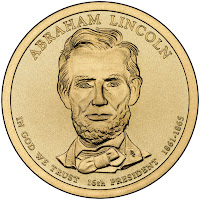 Thanksgiving was first celebrated in 1621 by the Dutch settlers at Plymouth, Massachusetts to celebrate a successful harvest. It was a tradition that the Pilgrims brought with them from Europe. After the birth of the United States, President George Washington issued a proclamation honoring the Thanksgiving harvest during his presidency. The only other president to issue a Thanksgiving proclamation was President James Madison. As part of his attempt to maintain the union, President Abraham Lincoln issued a proclamation that made Thanksgiving Day a national holiday in 1863.
Thanksgiving was first celebrated in 1621 by the Dutch settlers at Plymouth, Massachusetts to celebrate a successful harvest. It was a tradition that the Pilgrims brought with them from Europe. After the birth of the United States, President George Washington issued a proclamation honoring the Thanksgiving harvest during his presidency. The only other president to issue a Thanksgiving proclamation was President James Madison. As part of his attempt to maintain the union, President Abraham Lincoln issued a proclamation that made Thanksgiving Day a national holiday in 1863.
After Lincoln’s proclamation, it was traditional to celebrate Thanksgiving on the last Thursday of November. In a move to increase the holiday shopping period to promote more spending, President Franklin D. Roosevelt pushed to have congress pass a law to move Thanksgiving earlier in the month. In December 1941, Roosevelt signed a bill that set Thanksgiving as the fourth Thursday in November.
Be thankful for your life.
Be thankful for your family.
Be thankful for our hobby.
Be thankful for everything.
Happy Thanksgiving!
Image of the Lincoln Dollar courtesy of the U.S. Mint.
Oct 30, 2010 | currency, history, video
Since 1879, Crane & Co. has been the exclusive currency paper supplier to the Bureau of Engraving and Printing. The company was founded in 1801 by Zenas Crane. Crane, the fourth son of Liberty Paper Mill’s owner Stephen Crane, knew he would not be able to take over the family visit. After learning about paper making, Zenas moved to Dalton, Massachusetts and founded his own mill.
According to CNN Money, Crane & Co. became the supplier of currency paper to the BEP by applying business practices that would not be tolerated today* outbidding other potential bidders:
In May 1879, Zenas’ son, W. Murray Crane was in Washington, D.C., and heard that the Treasury Department was unhappy with their paper currency supplier and was accepting bids for the business.
After all the bids were submitted, Murray learned the amount of the lowest bid and raced back to his hotel room to prepare a second, much lower bid, says Crane historian Peter Hopkins. When the other bidders heard about Crane’s plan they locked him in his room, according to the story, but he managed to slip out and get his bid in just in time. Ever since, Crane & Co. has manufactured the U.S. currency paper.
Today, Crane & Co. is providing the currency paper for the new $100 note with technical features not found on any other note in the world. Interestingly, Crane & Co. is owned and managed by the eighth generation of the Crane family and continues to survive using its currency paper and stationary business.
The following video interviewing Crane & Co. CEO Charles Kittredge about the company’s history and the current economic climate for paper appeared in the Small Business Section of CNNMoney.com:
* CORRECTION: I was contacted by Peter Hopkins, who was quoted in the CNN story. He pointed out to me that while the CNN story may have made the practice of submitting a last minute bid was not exactly ethical, the telegram Murray Crane sent back to Crane & Co. noted that up to three bids could be submitted. Thus, Murray Crane was acting in accordance with the rules while his competitors were not acting professionally. I apologize for the error and corrected the story.
Video courtesy of CNN Money.com
Oct 27, 2010 | coin design, commemorative, history
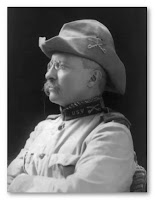 Although Theodore Roosevelt was born of wealth, he was a man of the people. Rather than becoming someone of society, Roosevelt sought to change society. From his days as an asthmatic child using hunting and other physical activities to overcome his weaknesses, his education at Harvard, conquering the Badlands of South Dakota, to a political career that changed nearly every level of government, Roosevelt was the renaissance of American history.
Although Theodore Roosevelt was born of wealth, he was a man of the people. Rather than becoming someone of society, Roosevelt sought to change society. From his days as an asthmatic child using hunting and other physical activities to overcome his weaknesses, his education at Harvard, conquering the Badlands of South Dakota, to a political career that changed nearly every level of government, Roosevelt was the renaissance of American history.
Before Roosevelt was 42, he was a deputy sheriff in the Dakota Territory, Police Commissioner of New York City, U.S. Civil Service Commissioner, Assistant Secretary of the Navy, and Colonel of the Rough Riders for which he was awarded the Medal of Honor. Roosevelt was elected to the New York State Assembly, Governor of New York, and Vice President of the United State. In fact, his nomination as vice president to run with William McKinley by the Republican Party was to get him out of New York because he was reforming the status quo out of existence.
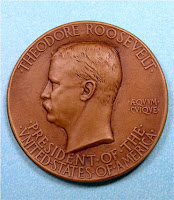 On September 14, 1901, at 42 years and 322 days of age, Roosevelt became the youngest President when McKinley was assassinated (Kennedy is the youngest elected president when he was inaugurated at 43 years, 236 days). As president he was a trust buster, conservationist, and his slogan of “Speak softly and carry a big stick” set the tone for military and foreign policy that even impacts today’s policies. Roosevelt was the first U.S. citizen and sitting to win the Nobel Peace Price for negotiating the 1905 peace treaty ending the Russo-Japanese War.
On September 14, 1901, at 42 years and 322 days of age, Roosevelt became the youngest President when McKinley was assassinated (Kennedy is the youngest elected president when he was inaugurated at 43 years, 236 days). As president he was a trust buster, conservationist, and his slogan of “Speak softly and carry a big stick” set the tone for military and foreign policy that even impacts today’s policies. Roosevelt was the first U.S. citizen and sitting to win the Nobel Peace Price for negotiating the 1905 peace treaty ending the Russo-Japanese War.
Roosevelt initiated the “Golden Age of American Coin Design.” Using his bully pulpit, he held the designs of the U.S. Mint Chief Engraver Charles E. Barber in contempt and ordered coinage whose designs were more than 25 years old to be redesigned. Roosevelt was a fan of sculptor Augustus Saint-Gaudens and asked him to help redesign American coinage.
After Saint-Gaudens died of cancer, Roosevelt continued to look to revitalize U.S. coinage. He seized upon Abraham Lincoln’s 100th birthday to redesign the small cent. He was steered to Victor David Brenner, whose bust of Lincoln was used as the model for the new Lincoln Cent first issued in 1909. Not only was Lincoln the first president to appear on a circulating coin, but Brenner’s obverse is still in use today.
Roosevelt called his coinage redesign his “pet crime”
For all his accomplishments, it is difficult to understand why our 26th President has not been honored on a coin.
Theodore Roosevelt was born on October 27, 1858, 152 years ago today. Happy Birthday, Mr. President! We numismatist thank you for your “pet crime!”
Roosevelt Inaugural Medal design by Augustus Saint-Gaudens courtesy of the Museum of American History.
Oct 22, 2010 | coins, commemorative, history
Starting at the turn of the 19th century, scientists inspired by Benjamin Franklin’s study of electricity started to look at ways that electricity could be generated and its energy turned into light. The idea that a lamp could be created that used electricity for use in coal mines. Oil and gas lamps were credited with causing a rash of explosions in Europe and alternatives were needed.
It started with Sir Humphry Davy, a British chemist who is credited with the discovery of alkali metals whose properties could generate electricity. Davy experimented with different filaments and containers to make a lamp that could be used in the mines. Davy Lamp was not successful, but began a century of experimenting with electricity.

Edison in 1878
Building on a half-century of research, Thomas Edison experimented with different filaments, eventually settling on a carbon filament. Edison held the first successful test on October 22, 1879. It lasted 40 hours. Later, Edison and his team would discover materials that would last over 1,200 hours.
Even though Edison did not invent the lightbulb, his significant improvements to the design of the lightbulb raised public consciousness on the wonder of the electric light branding him as the inventor of the lightbulb. It was one of over 1,300 inventions during a remarkable career.
In 1988, the 105th congress passed the “Thomas Alva Edison Commemorative Coin Act” (Public Law 105-331 [text] [pdf]). The law called for a $1 silver commemorative issued in 2004 to honor the 125th anniversary of the “invention of the lightbulb.”
The design of the 2004 Thomas Alva Edison Commemorative Coin depicts a portrait of Thomas Edison holding an early experimental lightbulb. It was designed by U.S. Mint Engraver Donna Weaver. The reverse depicts Edison’s first lightbulb and designed by John Mercanti. These commemoratives were struck at the Philadelphia Mint and was sold out.
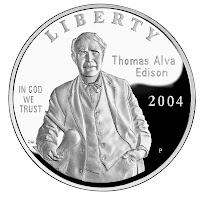
Obverse Designed by Donna Weaver

Reverse designed by John Mercanti
Coin images courtesy of the U.S. Mint.
Jul 19, 2010 | history, other, personal
Very few publications can trace its roots back to colonial times. One of those publications is The Saturday Evening Post. The Post was founded as The Universal Instructor of Arts and Sciences by a Samuel Keimer. Keimer moved to Philadelphia from New York after failing to secure work. He rented space from Hugh Meredith who printed the paper. The paper was not exactly successful and was ridiculed by Benjamin Franklin in The Mercury using the pseudonym “Busy Body.” After nine months, Keimer sold the paper to Franklin and Meredith on October 2, 1729.
The new partnership changed the title of paper to The Pennsylvania Gazette and Franklin began to edit the paper into a more readable half-sheet (half of a broadsheet) that was published twice per week. After a few weeks the work load forced Franklin change it to a weekly publication.
Franklin and Meredith dissolved their partnership on July 14, 1730. Franklin continued to publish The Pennsylvania Gazette as the paper’s sole publisher until he made David Hall a partner in 1748. Hall had been working for Franklin and writing for The Pennsylvania Gazette for five years prior to becoming a partner.
By 1765, Franklin and Hall dissolved their partnership. By May 1766, Hall partnered with William Sellers to continue publishing The Pennsylvania Gazette. Following Hall’s death in 1772, his sons William Hall and David Hall, Jr., continued in their father’s place.
The partnership of the Hall brothers and Sellers continued in William Sellers died in 1804. Shortly after Seller’s death, William transferred his partnership to David, Jr. who continued publishing The Pennsylvania Gazette. In 1810, David Hall, Jr. partnered with George W. Pierie until the partnership dissolved in 1815. Hall partnered with Samuel C. Atkinson until Hall died on May 27, 1821.
Following Hall’s death, Atkinson partnered with Charles Alexander. Alexander was a business partner of Atkinson in other ventures. Atkinson and Alexander decided that the paper needed a new character to keep readers interested and capture new readers. They revamped the paper and on August 4, 1821, debuted the first edition of The Saturday Evening Post. The new paper included weekly news stories but included poetry and short stories from contributors like Edgar Allan Poe, Harriet Beecher Stowe, James Fenimore Cooper, and many other famous authors.
Through the 19th century, The Saturday Evening Post changed hands several time until it was purchased by Curtis Publishing in 1897. Curtis Publishing brought the paper to a new level especially when it hired a 22-year old artist named Norman Rockwell in 1916. During the 1940s, 1950s, and 1960s Rockwell was joined by N.C. Wyeth, J. C. Leyendecker, John Clymer, and John E. Sheridan to create some of the most memorable cover illustrations in history.
Curtis Publishing stopped publishing The Post in 1969 after losing a defamation case (Curtis Publishing Co. v. Butts, 388 U.S. 130 (1967)) and ordered to pay $3 million in damages.
The Saturday Evening Post was revived in 1971 as a quarterly publication with an additional focus on the coverage of heath issues and disease prevention. In 1978, ownership was transferred to the non-profit Saturday Evening Post Society who continues to publish The Post as a bi-monthly publication.
 Through this long history, The Saturday Evening Post continues to publish a variety of stories including those of general interest. One of The Post’s regular columns is “Collectible News & Notes.” As part of the column, The Post features a collector and their passion for what they collect. In the July/August 2010 issue (Vol. 283, No. 4), your blog host is the featured collector.
Through this long history, The Saturday Evening Post continues to publish a variety of stories including those of general interest. One of The Post’s regular columns is “Collectible News & Notes.” As part of the column, The Post features a collector and their passion for what they collect. In the July/August 2010 issue (Vol. 283, No. 4), your blog host is the featured collector.
I was contacted via email by the writer of the article. After we exchanged a few notes, he called me one afternoon. I happened to have been driving to a local grocery store when he called. I spent most of our one-and-a-half hour conversation while sitting in the parking lot in front of the grocery store. It was a pleasant conversation and I am sure I gave him more information than he asked for. He distilled the conversation into a nice article that appears on one page—even though there is a minor mistake (in the caption under the picture, it should say that I am still looking for a 1909-S VDB Lincoln Cent in change).
Two weeks after our discussion, a local freelance photographer visited my home to photograph me and my coins. The photographer was a pleasant woman who also took pictures of my dogs. My wife liked the pictures that appear in the magazine.
It might be difficult to find a copy of The Post on newsstands. The magazine has a higher subscription circulation than from newsstands. You might find a copy in a bookstore that has a large magazine section. Otherwise, it should appear on their website in a few months.
The Saturday Evening Post dates back to Benjamin Franklin. It has featured great authors, artists, and other Americans. Now, I am part of that history. How cool is that!
Cover image courtesy of The Saturday Evening Post.
Jul 4, 2010 | celebration, history
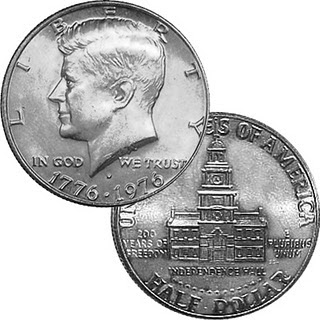 After nearly a year of war and attempted negotiation with King George III and the British parliament, it became clear that the colonies in the New World would continue to be under harsh rule without representation. In January 1776, the Continental Congress met to discuss the matter.
After nearly a year of war and attempted negotiation with King George III and the British parliament, it became clear that the colonies in the New World would continue to be under harsh rule without representation. In January 1776, the Continental Congress met to discuss the matter.
Public support for independence from the British Empire was growing amongst the colonies. Only the “middle colonies” of New York, New Jersey, Delaware, and Maryland who were benefiting financially being part of the British Empire were against independence. When these colonies sent delegations to the Continental Congress, each of their conventions did not allow them to vote for independence.
As the war with Great Britain dragged on and the attempt at tightening their reigns on the colonies persisted, the populous cry for independence grew. Delegates were set back to their governments and representatives sent to the middle colonies to convince them that the colonies had to declare independence for their own survival. As colonies began to line up with the independence movement, Pennsylvania, New York, Maryland, and South Carolina remained reticent on the subject.
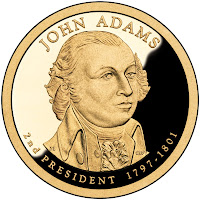 Of the four hold outs, Pennsylvania and Maryland had governments with strong ties to the colonial governors who still had influence. John Adams wrote a draft preamble to explain the independence resolution. Part of the way the resolution was written was, in effect, to overthrow the colonial governments of Pennsylvania and Maryland so that it would be replaced by a popular government. On May 15, 1776, that preamble was passed. The colonies had taken their first step toward independence.
Of the four hold outs, Pennsylvania and Maryland had governments with strong ties to the colonial governors who still had influence. John Adams wrote a draft preamble to explain the independence resolution. Part of the way the resolution was written was, in effect, to overthrow the colonial governments of Pennsylvania and Maryland so that it would be replaced by a popular government. On May 15, 1776, that preamble was passed. The colonies had taken their first step toward independence.
Delegates left the congress and returned to their own colonial conventions. Maryland, whose delegates walked out of the congress in protest, continued to reject the notion of independence. Samuel Chase returned to Maryland and convinced them to allow their delegates to approve the motion of independence. Pennsylvania, New York, and South Carolina remained against the declaration while the Delaware delegates were split.
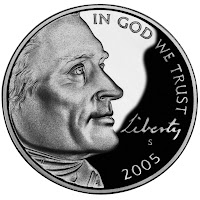 On June 11, 1776, the “Committee of Five” was appointed to draft a declaration. Committee members were John Adams of Massachusetts, Benjamin Franklin of Pennsylvania, Thomas Jefferson of Virginia, Robert R. Livingston of New York, and Roger Sherman of Connecticut. Although no minutes were kept from the committee meetings, it was accepted that the resulting document was largely Jefferson’s work. The Committee of Five completed the draft on June 28, 1776.
On June 11, 1776, the “Committee of Five” was appointed to draft a declaration. Committee members were John Adams of Massachusetts, Benjamin Franklin of Pennsylvania, Thomas Jefferson of Virginia, Robert R. Livingston of New York, and Roger Sherman of Connecticut. Although no minutes were kept from the committee meetings, it was accepted that the resulting document was largely Jefferson’s work. The Committee of Five completed the draft on June 28, 1776.
Debate on the draft began on July 1. After a long day of speeches a vote was taken. Maryland voted yes but Pennsylvania and South Carolina voted no. The New York delegation abstained with out authority from their government to vote. Delaware could not vote because its delegate was split on the question. Edward Rutledge of South Carolina moved to postpone the vote until the next day.
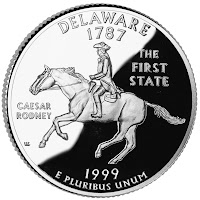 Although there is no written history on what happened that evening, there had to have been lobbying by supporters of independence because on July 2, South Carolina voted yes followed by a turnaround by the Pennsylvania delegation that also voted yes. New York with no authority from their government continued to abstain. With the Delaware delegation deadlocked, this set up the historical ride of Caesar Rodney. Rodney was one of Delaware’s representative to the Continental Congress. He was in Dover attending to other business when he learned that Thomas McKean and George Read were deadlocked on the vote of independence. Rodney rode 80 miles from Dover to Philadelphia to vote with McKean to allow Delaware join eleven other colonies voting in favor of independence.
Although there is no written history on what happened that evening, there had to have been lobbying by supporters of independence because on July 2, South Carolina voted yes followed by a turnaround by the Pennsylvania delegation that also voted yes. New York with no authority from their government continued to abstain. With the Delaware delegation deadlocked, this set up the historical ride of Caesar Rodney. Rodney was one of Delaware’s representative to the Continental Congress. He was in Dover attending to other business when he learned that Thomas McKean and George Read were deadlocked on the vote of independence. Rodney rode 80 miles from Dover to Philadelphia to vote with McKean to allow Delaware join eleven other colonies voting in favor of independence.
With 12 votes for independence and one abstention, the Continental Congress approved the declaration. Jefferson then set forth to make the agreed upon corrections to the document. On July 4, 1776, the Continental Congress approved the wording of the Declaration of Independence. The document was sent to the printer for publication and distribution to the public.
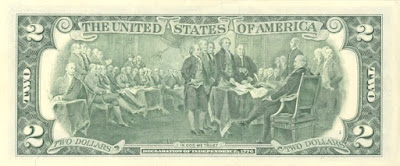
Although historians debate exactly when the final document was signed, it is accepted that the final signatures were added on August 2, 1776. Since New York approved the resolution of independence on July 10, the New York delegation is included amongst the signatures.
As we celebrate the 234th Birthday of the United States of America, please take a moment to remember those who fought for our freedom and continue to do so today. Honoring them is the best way to honor those whose vision created this great nation.
Picture Credits
Kennedy Bicentennial Half and $2 Federal Reserve Note reverse are from Wikipedia
Other coin images are courtesy of the U.S. Mint
Mar 1, 2010 | Canada, history, medals
Tonight, I watched the last medal event of the 2010 Winter Olympics. I love hockey and being a crass American, I was rooting for Ryan Miller (Buffalo Sabres), Zach Parise (New Jersey Devils), and Patrick Kane (Chicago Blackhawks) to lead the USA team to the gold. There was also Ryan Suter (Nashville Predators) of the Suter family that seemed to dominate the NHL in the 1980s and into the 1990s whose dad, Bob, played for the 1980 Miracle on Ice team in Lake Placid. But Team Canada played well and won the gold when the Pittsburgh Penguin’s Sidney Crosby shot it past Ryan Miller for the game winning goal in overtime. It was a thrilling game and fitting for the Olympic Hockey finals.
Hockey is to Canada as basketball is to the United States. Hockey was invented in Canada and they consider it their birthright to win. In the United States we had that same feeling about basketball. Those of us who were around for the 1972 Munich clock controversy remembers how it felt when the Soviet Union was given the break to win the game. The US Basketball Federation protested the game to FIBA, international basketball’s governing body. The protest was denied when the representatives from the communist nations out voted the non-communist nations 3-2.
As much as the Olympic committee wants to keep politics out of the games it will play a role as long as the athletes wear country designations. The 1972 Munich summer games included the killing 17 members of the Israeli Olympic team by Palestinian terrorists. Israel withdrew its remaining members while the Soviet Union, most of the eastern bloc under the control of the Soviet Union, North Korea, and ten Arab nations refused to allow their flags to fly at half-staff for the rest of the games. With the Cold War becoming its chilliest, the loss in basketball was not only a national tragedy but fueled a nationwide hatred against the Soviets.
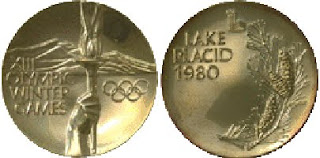 This is not to say hockey does not have its place in the United States. We celebrate the 1980 Miracle on Ice when the United States sent true amateurs against the world, especially those countries from the eastern bloc whose players were technically in the army but played hockey all of the time. The Soviet Union were the prohibitive favorites but hated by Americans for being professionals and for being Soviets. There was a lot of Cold War hatred between the countries. But nobody gave the U.S. team a chance except for Coach Herb Brooks. That 4-3 win against the Soviet team continues to raise emotion not only because how the team won, but for the political attitudes at the time. Democracy and fair play prevailed over the communists and cheaters. Even USA Basketball took great pride in watching the hockey team stick it to the Soviets.
This is not to say hockey does not have its place in the United States. We celebrate the 1980 Miracle on Ice when the United States sent true amateurs against the world, especially those countries from the eastern bloc whose players were technically in the army but played hockey all of the time. The Soviet Union were the prohibitive favorites but hated by Americans for being professionals and for being Soviets. There was a lot of Cold War hatred between the countries. But nobody gave the U.S. team a chance except for Coach Herb Brooks. That 4-3 win against the Soviet team continues to raise emotion not only because how the team won, but for the political attitudes at the time. Democracy and fair play prevailed over the communists and cheaters. Even USA Basketball took great pride in watching the hockey team stick it to the Soviets.
What people forget is that the game against the Soviets was not the gold medal game. The US team had to play one more game against Finland in order to win the gold. It was a tight game which the US won 4-2 allowing the US to stand atop of the hockey medal stand. One of my memories was that after the game Ken Morrow joined the roster of the New York Islanders (my favorite team) and won a Stanley Cup making him the first player to win a gold medal and the Stanley Cup in the same year.
 We should not forget about what is being called the Forgotten Miracle of the 1960 US Hockey team. The winter games that were held in Squaw Valley, California featured the powerhouse Soviet team and the Canadians who were also considered favorites for a gold or a silver medal. But the US team of “nobodys” beat Sweden, Germany, Canada, Soviet Union, and Czechoslovakia in the round-robin series to be the only undefeated team in the final round. The team celebrated while the news made front page news but the celebration did not rise to the levels of the 1980 team. While the Cold War was ongoing, it was ongoing (remember Duck and Cover?) it was not considered at the same level as in 1980. The level of rhetoric had not started to climb. Tensions would begin to increase in October 1960 when Soviet Union Prime Minister Nikita Khruschev banged his shoe on a table in protest during a meeting at the United Nations while denouncing “American Imperialism.” This was two years before the Cuban Missile Crisis.
We should not forget about what is being called the Forgotten Miracle of the 1960 US Hockey team. The winter games that were held in Squaw Valley, California featured the powerhouse Soviet team and the Canadians who were also considered favorites for a gold or a silver medal. But the US team of “nobodys” beat Sweden, Germany, Canada, Soviet Union, and Czechoslovakia in the round-robin series to be the only undefeated team in the final round. The team celebrated while the news made front page news but the celebration did not rise to the levels of the 1980 team. While the Cold War was ongoing, it was ongoing (remember Duck and Cover?) it was not considered at the same level as in 1980. The level of rhetoric had not started to climb. Tensions would begin to increase in October 1960 when Soviet Union Prime Minister Nikita Khruschev banged his shoe on a table in protest during a meeting at the United Nations while denouncing “American Imperialism.” This was two years before the Cuban Missile Crisis.
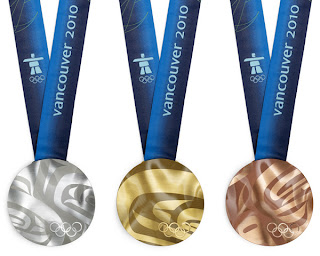 The actual medals that the Olympians receive are the physical reward for winning. In years past medals used to made of the metal they represented (e.g., the gold medal was made of gold), nowadays the price to create solid gold, silver, and bronze medals are prohibitive. Medals are made of less expensive alloys with plating of the precious metal. Although Royal Canadian Mint does not publish the makeup of the metals on their website, the fact that they are the largest and heaviest medals ever produced allows us to make a logical assumption that the medals are made of base metals plated with the precious metals. Regardless, the medals created by the RCM are the most uniqued in the history of the Olympic games. The wavy medals feature a unique design where no two are alike that are based on four designs that are imprinted randomly on each medal. While the medals received by the 1960 and 1980 hockey teams can be considered traditional in their design, the 2010 medals have a unique artistic quality that will make them memorable for years to come.
The actual medals that the Olympians receive are the physical reward for winning. In years past medals used to made of the metal they represented (e.g., the gold medal was made of gold), nowadays the price to create solid gold, silver, and bronze medals are prohibitive. Medals are made of less expensive alloys with plating of the precious metal. Although Royal Canadian Mint does not publish the makeup of the metals on their website, the fact that they are the largest and heaviest medals ever produced allows us to make a logical assumption that the medals are made of base metals plated with the precious metals. Regardless, the medals created by the RCM are the most uniqued in the history of the Olympic games. The wavy medals feature a unique design where no two are alike that are based on four designs that are imprinted randomly on each medal. While the medals received by the 1960 and 1980 hockey teams can be considered traditional in their design, the 2010 medals have a unique artistic quality that will make them memorable for years to come.
In the future, the 2010 US Hockey team will be prouder of their silver medal accomplishment than they feel tonight. But tonight belongs to the Canadians. They played a good game and deserve their gold medals.
Congratulations also goes to Vancouver, the province of British Columbia, and the people of Canada for helping make these two weeks one of the most memorable in Olympic history.
P.S., I love visiting the west coast of Canada. If you can go to Vancouver and even Vancouver Island (take the ferry, it’s a great trip), it will be a very enjoyable vacation. I look forward to my next visit!
Feb 13, 2010 | currency, history
I am writing an article for the Maryland State Numismatic Association about Maryland colonial currency. After writing the introduction, I thought it would be of interest to my readers. I made a slight modification to neatly end this as a single article. The rest will appear in a future MSNA Journal.
Prior to the Great Depression, paper currency was backed with specie, gold or silver mined in the United States. During the founding of the country currency had been limited to coins with an intrinsic value based on their gold, silver or copper content. As the King of England tried to tax the colonies to pay for the wars in Europe, the colonies looked for ways of financing their own governments to provide services.
Since the colonies did not have the ability to coin money, they issued paper notes. These notes functioned as currency but actually were bills of credit, short-term public loans to the government. For the first time, the money had no intrinsic value but was valued at the rate issued by the government of the colony in payment of debt. Every time the colonial government would need money, they would authorize the printing of a specified quantity and denomination of notes that it would use to pay creditors. The emission laws also included a tax that would used to repay the bill of credit and the promised interest.
As taxes were paid using the paper currency, the paper was retired. As the notes were removed from circulation, that was less payments the government had to make. On the maturity date, people brought their notes to authorized agents who paid off the loan. Agents then turned the notes over to the colonial government to be reimbursed and collect a commission for acting as an agent.
Sometimes, colonies could not pay back the loan. In those cases, the colonies passed another emission law to cover the debt owed from the previous emission plus further operating expenses. In this case, mature notes were traded for new notes. The colonists accepted this system since there were shortages of coins as well as there being an inability to convert the value of foreign coins into colonial shillings by farmers and other unskilled in such matters.
Maryland was one of the more successful colonies. Maryland benefited from its ownership of the Chesapeake Bay and ran a robust economy as a trading post for Maryland and Virginia goods. Maryland merchants were able to make a sizable living trading tobacco and other crops to Europe for Virginia farmers.
Starting in 1733, there were eight emissions from the Maryland colony with four during the Revolutionary War. The last emission was in 1780 with a successful payment of obligations in 1782, prior to its 1784 maturity date. In 1784, Maryland was able to pay its debts in specie, mostly Spanish Milled Dollars, and outlawed any future release of currency.














